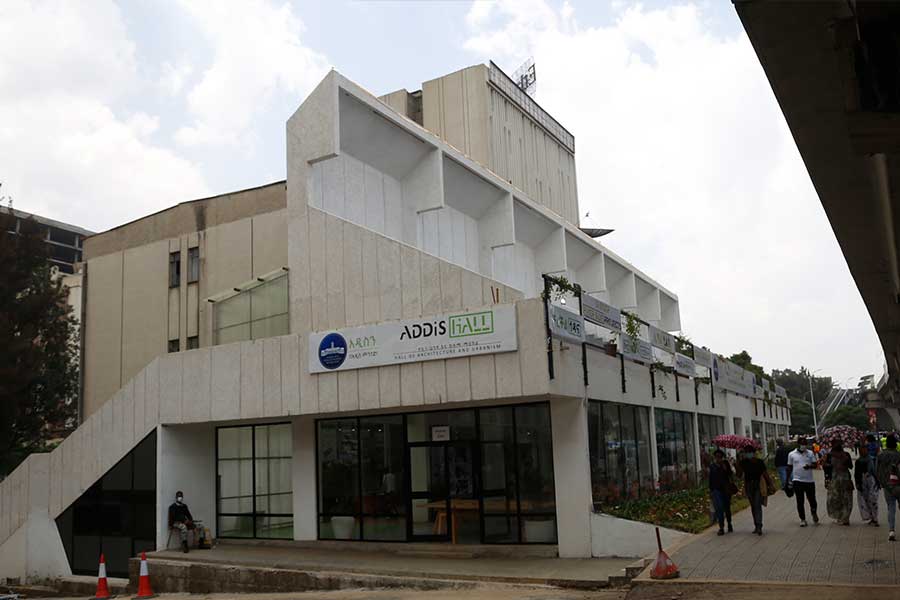
Fortune News | Nov 12,2022
With financing from the World Bank, Anbessa City Bus Service Enterprise is starting the process of adopting an application for better transport management.
The 77-year-old public transport operator secured 12.5 million dollars from the World Bank for the project. Out of the total budget, 10 million dollars of it is allocated for the Intelligent Transport System, while the remaining is allotted for consultancy service.
Using computers and communications equipment, the system aims at making the city's transportation system faster, safer and more efficient. The System includes e-ticketing cards, a global positioning system (GPS) and passenger counting application.
The System will also have automatic vehicle identifiers and GPS-based automatic vehicle locators with cameras. The hardware mainly records data, including traffic count, travel speed, travel time, location, vehicle weight and delays. The hardware devices are connected to servers located at data collection centres, which store information for further analysis.
The system targets to achieve traffic efficiency by minimising traffic problems, according to Habtu Reda, an information tech main process owner of the Enterprise, which transports more than half a million citizens a day across 125 routes and generates more than 1.2 million Br a day.
"It provides users with prior information about traffic conditions and seat availability," said Habtu. "It will also increase road safety and efficient infrastructure usage."
The Enterprise has been conducting a feasibility study on the project for a year and a half with the assistance of the Addis Abeba Transport Authority's Transport Management Office (TPMO).
Delhi Integrated Multi-Modal Transit System Ltd, an Indian firm, was hired for the consultancy service, including the preparation of user functionality, design and specification including preparation of the bid document. The company was hired in 2016 to work on the first phase of the project, which is the feasibility study part.
The Indian firm, which was formed after a joint venture merger between the National Capital Territory of Delhi and the IDFC Foundation, specialises in urban transportation, commissioning, consultancy, intelligent transport system solutions and urban transport asset management services.
The Enterprise will float an international tender in a month to hire a company that will supply the programme, according to Habtu.
To supervise and follow up on the project, a steering committee was formed from Sheger City Bus, TPMO and the Enterprise. The project, which is expected to be fully implemented in the next Ethiopian year, has two lots: infrastructure development and application.
Once fully implemented, the system will help the Enterprise control aggressive driving, fuel waste and the mechanical breakdown of buses, according to Habtu.
The Enterprise dispatches 600 buses a day, and it has 811 buses in total, out of which 543 are the latest models.
The programme is also comprised of finance and human resource systems along with passenger information, bus allocation and a ticketing system, according to Behailu Gebreyesus, head of the Project Implementation Unit at the TPMO.
Considering this, the Enterprise, which operates with 4,200 employees, is giving basic training to 400 employees and advanced training on ITS for 26 employees.
The IT department of the Enterprise has also designed three sample software programmes for e-ticketing, key performance indicators and preventive maintenance management for the training, according to Habtu.
The city's Transport Management Office has a plan to implement the e-ticketing system at Sheger City Bus, another public transporter.
Amha Wondimu, the founder and chief technical officer of ZalaTech Website, a design, software development and hardware network installation company, fears that the programme would be affected by the internet outages since the application is internet-based.
Amha also recommends the Enterprise consider implementing an electronic payment system for users.
The electronic payment system should be integrated with the core banking system of banks, he suggested.
PUBLISHED ON
Dec 21,2019 [ VOL
20 , NO
1025]

Fortune News | Nov 12,2022

View From Arada | Jan 26,2019

Radar | Dec 07,2019

Fortune News | Jul 13,2020

Fortune News | Mar 26,2022

Radar | Mar 18,2023

Radar | Jul 23,2022

Fortune News | Oct 30,2021

Radar | Dec 17,2022

Radar | Sep 10,2022

Dec 22 , 2024 . By TIZITA SHEWAFERAW
Charged with transforming colossal state-owned enterprises into modern and competitiv...

Aug 18 , 2024 . By AKSAH ITALO
Although predictable Yonas Zerihun's job in the ride-hailing service is not immune to...

Jul 28 , 2024 . By TIZITA SHEWAFERAW
Unhabitual, perhaps too many, Samuel Gebreyohannes, 38, used to occasionally enjoy a couple of beers at breakfast. However, he recently swit...

Jul 13 , 2024 . By AKSAH ITALO
Investors who rely on tractors, trucks, and field vehicles for commuting, transporting commodities, and f...

Jul 5 , 2025
Six years ago, Ethiopia was the darling of international liberal commentators. A year...

Jun 28 , 2025
Meseret Damtie, the assertive auditor general, has never been shy about naming names...

Jun 21 , 2025
A well-worn adage says, “Budget is not destiny, but it is direction.” Examining t...

Jun 14 , 2025
Yet again, the Horn of Africa is bracing for trouble. A region already frayed by wars...